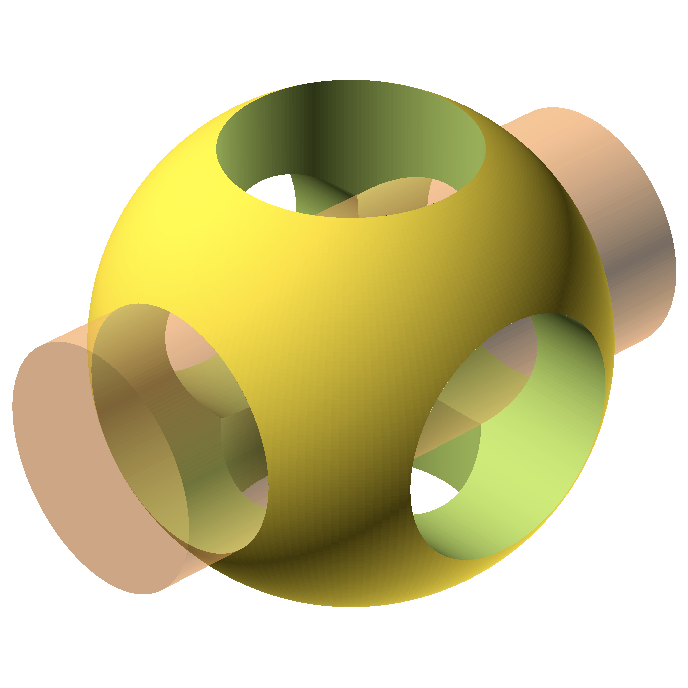Maintained by the OpenSCAD Team.
devbased on Debian bookworm2021.01latestbased on Debian buster2019.05based on Debian buster2015.03based on Debian stretch
The devtag is rebuilt regularly from the master branch of the OpenSCAD repository. Additional tags are set with the date of the build, so for example the build on March 25th, 2024 will be tagged as both dev and dev.2024-03-25.
-
For help use the mailing list or the #openscad IRC channel on libera.chat.
-
Bug reports and feature requests can be filed at https://github.com/openscad/docker-openscad/issues
-
Documentation about OpenSCAD can be found at https://openscad.org/documentation.html
- Get started with the Tutorial
- A quick reference card is available as Cheatsheet
- For more details, see the User Manual and Language Reference
- The list of Books includes some directly about OpenSCAD and others using OpenSCAD to help teach topics like Math, Geometry, and 3D printing.
OpenSCAD is not an interactive modeller. Instead it is something like a 3D-compiler that reads in a script file that describes the object and renders the 3D model from this script file. This gives you (the designer) full control over the modelling process and enables you to easily change any step in the modelling process or make designs that are defined by configurable parameters.
OpenSCAD provides two main modelling techniques: First there is constructive solid geometry (aka CSG) and second there is extrusion of 2D outlines. Autocad DXF files can be used as the data exchange format for such 2D outlines. In addition to 2D paths for extrusion it is also possible to read design parameters from DXF files. Besides DXF files OpenSCAD can read and create 3D models in the STL and OFF file formats.
The OpenSCAD binary is distributed under the GNU General Public License v3.0 (or later). The source code can be found in the github repository under the release version / tag that is the same as the docker image tag.
For the development builds the matching source code can be found via the commit hash shown via docker run openscad/openscad:dev openscad --info | head -n1
For general use (running OpenSCAD in a container), please use the openscad/openscad images published and documented at Docker Hub.
docker run \
-it \
--rm \
-v $(pwd):/openscad \
-u $(id -u ${USER}):$(id -g ${USER}) \
openscad/openscad:latest \
openscad -o CSG.3mf CSG.scaddocker run \
-it \
--rm \
--init \
-v $(pwd):/openscad \
-u $(id -u ${USER}):$(id -g ${USER}) \
openscad/openscad:latest \
xvfb-run -a openscad -o CSG.png CSG.scadNote that PNG renderings currently still needs the X display in all release versions. So this needs --init and run via xvfb-run.
That limitation is lifted in the latest dev snapshots due to the built-in EGL support.
OpenSCAD supports usage in Makefiles, e.g.
%.stl: %.scad
openscad -m make -o ./stl/$@ -d $@.deps $<
openscad -m make --render -o ./png/$@.png $<
Using the docker container version allows this too, by transforming the
tool calls to the $(shell ...) notation. Note that this does not easily
supports the -m make option as that would run inside the container and
may need extra attention. The currently published containers do not have
make installed.
%.stl: %.scad
docker run \
-it \
--rm \
-v $(shell pwd):/openscad \
-u $(shell id -u ${USER}):$(shell id -g ${USER}) \
openscad/openscad:latest \
openscad -o ./stl/$@ -d $@.deps $<
docker run \
-it \
--rm \
--init \
-v $(shell pwd):/openscad \
-u $(shell id -u ${USER}):$(shell id -g ${USER}) \
openscad/openscad:latest \
xvfb-run -a openscad -o ./png/$@.png $<
openscad/appimage-*openscad/mxe-*openscad/src-*
All docker images can be viewed with a Docker Hub search for openscad/.
